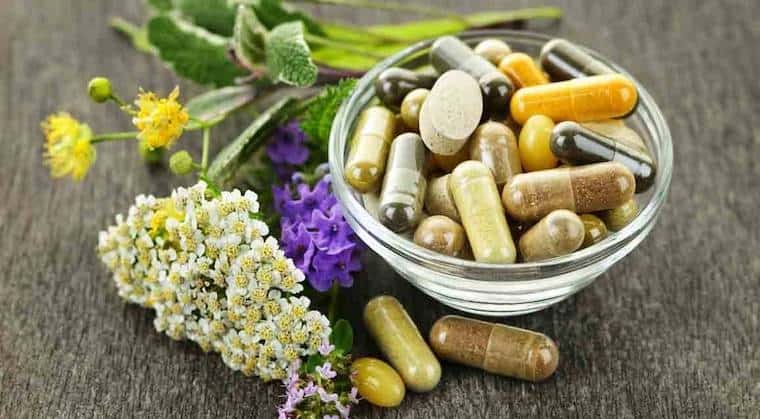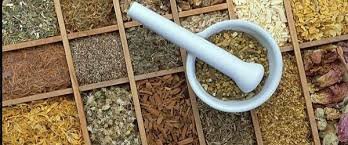African Traditional Medicine and COVID-19
by Vennisa Owusu-Barfi
Source: www.thisisafrica.me
There are several ways to inhale steam, which is created by boiling water with various herbs and then breathing in the steam it releases. Here is an example:
Put two quarts of water into a pot.
Heat the water until it's not quite boiling, just steamy.
Put two handfuls of herbs (lemon grass, mint, uziza, utazi) in the water, and let it steep for 10 minutes.
Create a tent with a towel over your head to inhale the steam.
Inhale the steam for no more than 10 minutes.
Keep the decoction, or extract, of water and herbs on your counter for a few hours after you're finished. At that point, the herbs have become more concentrated, and the chemicals they release into the air from their essential oils can be left to dissipate in the air, where they can continue to help refresh you and your environment. You can toss the liquid after a few days.
The rich history of African medicine has been ignored and buried in centuries of stigmatization and lack of scientific research and development. Though millions of people on the continent relied on this form of treatment, the advent of Western medicine proved detrimental to its growth and value in these same communities. Thus, even though Western and African medicine in the early 15th century (during the arrival of Europeans on the African continent) seemed to be on the same level in terms of scientific research and methodological basis of treatments, the systematic rejection of African medicine led to lack of research in the standardization and development of treatment at the turn of the scientific age.1
Most pharmaceutical companies developing new treatments in western medicine usually rely on traditional medicine for the development of bioactive agents that form the basis of medications in the final product of pills, capsules, inhalers etc.2 However, these same companies reject African treatments as a valid form of healthcare in African communities. Due to the lack of investment, the immense economic potential and value has been ignored with the traditional medicine industry in South Africa for example, contributing about 186 million dollars in annual revenue.3 In addition, a large percentage of Africans still depend on traditional medicine as a means of accessing healthcare with 26.6 million people in South Africa alone relying on African medicine.4 This is due to the limited access to Western forms of healthcare and the high costs of treatment which are highly unaffordable for many people.
Source: www.healthstaff.co.za
The pandemic has led to the increased global exposure to already existing traditional African treatments for respiratory illnesses. However, due to the stigma around herbal-based medicine and the lack of research to support its effectiveness, most of these have been rejected and discarded as pseudo-science by healthcare professionals and organizations. One example is steam inhalation/therapy, a treatment that has existed and has been around since ancient times. The Ancient Egyptians were the first known users of inhalation therapy which often included dry plants and minerals in their preparations. Though not an approved treatment for COVID-19, it is still a common non-pharmacologic treatment to help clear mucus and open up the nasal passages, throat, and lungs.5
Disclaimer:
The Center for Disease Control (CDC) recommends the COVID-19 vaccine as the most effective protection against COVID-19. For more information, visit: https://www.cdc.gov/coronavirus/2019-ncov/index.html
This article attempts to provide awareness to traditional African medicine and is for educational purposes only. It should not be substituted for professional medical advice. Please consult your healthcare provider if seeking medical advice, diagnosis or treatment
Sources:
Abdullahi, A. A. (2011). Trends and challenges of traditional medicine in Africa. African journal of traditional, complementary, and alternative medicines : AJTCAM. Retrieved June 5, 2022, from https://www.ncbi.nlm.nih.gov/pmc/articles/PMC3252714/
Fokunang, C. N., Ndikum, V., Tabi, O. Y., Jiofack, R. B., Ngameni, B., Guedje, N. M., Tembe-Fokunang, E. A., Tomkins, P., Barkwan, S., Kechia, F., Asongalem, E., Ngoupayou, J., Torimiro, N. J., Gonsu, K. H., Sielinou, V., Ngadjui, B. T., Angwafor, F., Nkongmeneck, A., Abena, O. M., … Kamsu-Kom. (2011). Traditional medicine: Past, present and future research and Development Prospects and integration in the National Health System of Cameroon. African journal of traditional, complementary, and alternative medicines : AJTCAM. Retrieved June 5, 2022, from https://www.ncbi.nlm.nih.gov/pmc/articles/PMC3252219/
South African Health Review 2020 - hst.org.za. (n.d.). Retrieved June 6, 2022, from https://www.hst.org.za/publications/South%20African%20Health%20Reviews/SAHR_Introduction_17122020_Final.pdf?ID=425
Appelbaum Belisle, H., Hennink, M., Ordóñez, C. E., John, S., Ngubane-Joye, E., Hampton, J., Sunpath, H., Preston-Whyte, E., & Marconi, V. C. (2015, January). Concurrent use of traditional medicine and art: Perspectives of patients, providers and traditional healers in Durban, South Africa. Global public health. Retrieved June 5, 2022, from https://www.ncbi.nlm.nih.gov/pmc/articles/PMC4262581/
Inhalation therapy: An historical review - researchgate. (n.d.). Retrieved June 6, 2022, from https://www.researchgate.net/publication/6449968_Inhalation_therapy_An_historical_review

